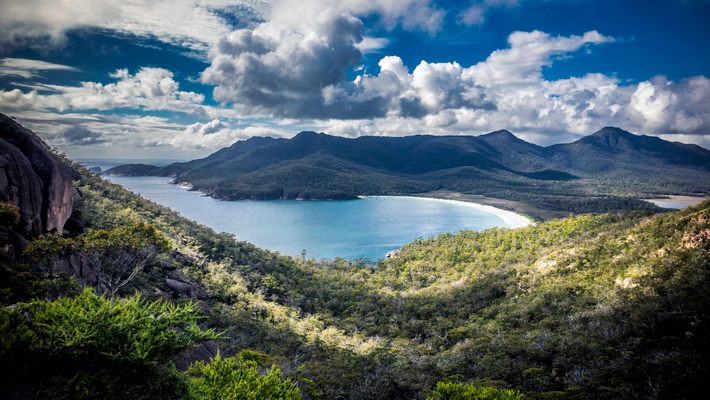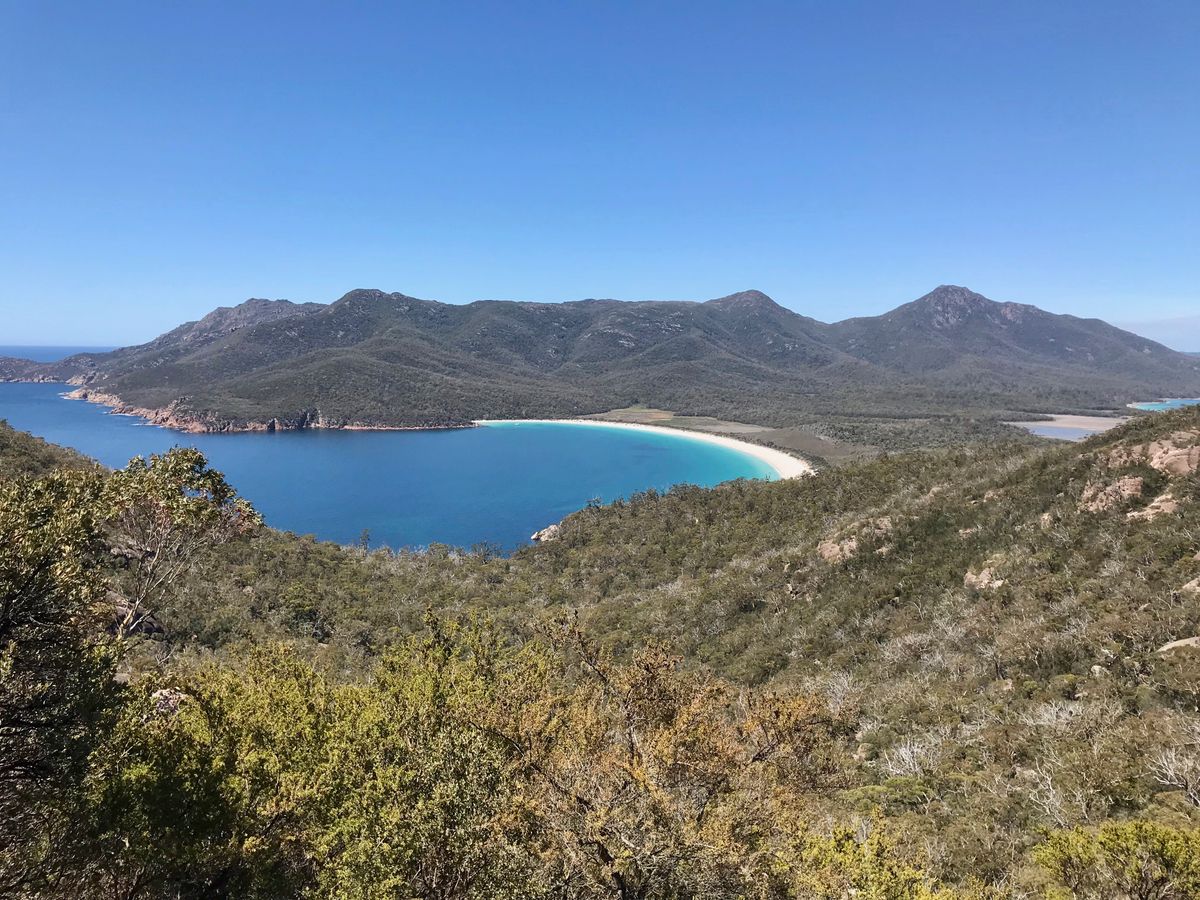About
Voted by several travel authorities one of the best beaches in the entire world, Wineglass Bay is famous for the red and pink granite formations that make it so beautiful to tourists. The Devonian Granite is the dominant type of rock in the area. A pink feldspar that gives the coastlines their characteristic pink tint, the rock is also mixed with white quartz and other types of rock. The crystal clear water isn't so bad either.
Part of the Freycinet National Park on the east coast of Tasmania, Australia, that also includes a large chunk of the rugged Tasmanian coastline, Wineglass Bay has a climate that is similar to that of France, but with more than 300 days of sunshine every year.
Recognized around the world as one of Tasmania's iconic destinations, Wineglass Bay is more than just a place to picnic or camp. Wineglass attracts tourists who are looking to do some birdwatching (white-bellied sea-eagles are plentiful), deep sea fishing, scuba diving, mountain biking, beach walking, and rock climbing.
Freycinet is one of the oldest parks in Tasmania, having been founded in 1916 along with Mount Feld National Park. The park is home to not just Wineglass Bay, but also 49 endemic species of plants and several animals, including the Brushtail Possum, the New Holland Mouse, the Tasmanian Bettong, and the Long-nosed Potoroo.
Related Tags
Know Before You Go
Wineglass Bay is approximately 2.5 hours drive from Tasmania’s capital, Hobart (195 kilometres/121 miles) and around two hours’ drive (175 kilometres/109 miles) from Launceston in Tasmania’s north.
Community Contributors
Added By
Published
May 4, 2011














































